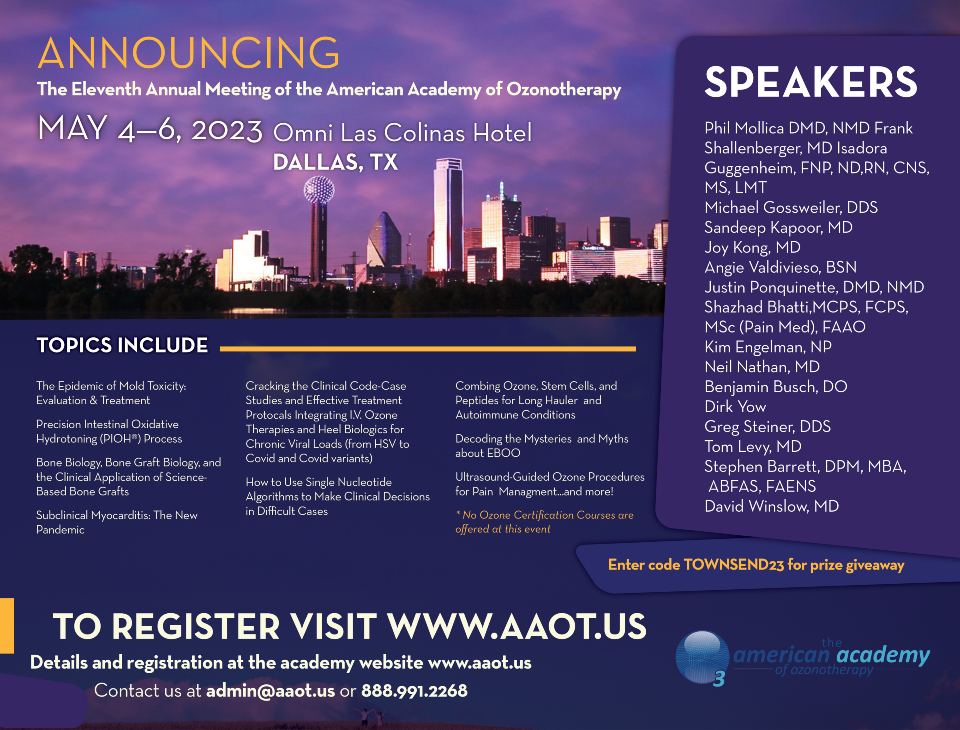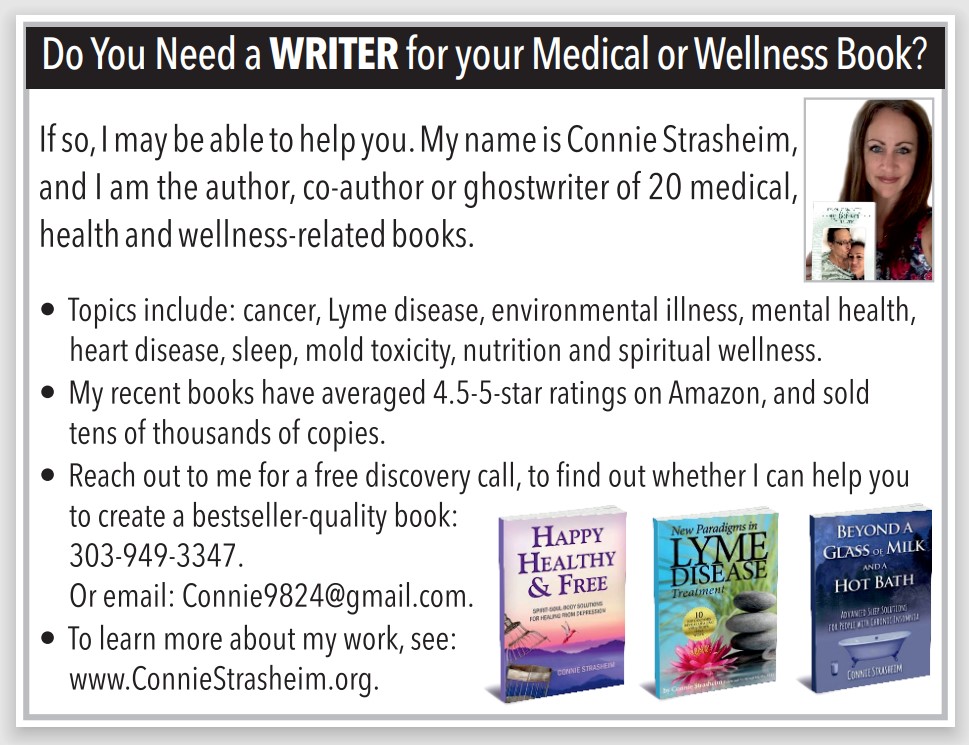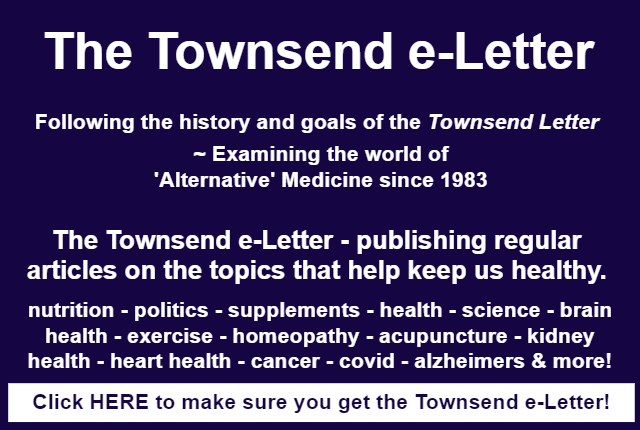Douglas Lobay, ND
One of my favorite books pertaining to health, healing and exceptional patients was the 1984 book by Dr. Bernie Siegel called Love, Medicine and Miracles. Dr. Siegel was a cancer surgeon in New England who observed the qualities and characteristics of patients who defied the odds of standard western medicine. In a symbolic display of medical mimicry, Dr. Siegel shaved his head so that he resembled and resonated with his patients. Many individuals that Dr. Siegel talks about were advanced stage 4 cancer patients from vastly different backgrounds and walks of life. There appeared to be not one particular pathway, medicine or treatment that unified these patients except for their attitude, their display of unconditional love and unwavering commitment to others.
Love, Medicine and Miracles should be requisite reading for all individuals who suffer from health problems. It can initiate self-discovery and help promote the incredible innate power of self-healing. The musician and the widow maker are two real and authentic examples of exceptional cardiovascular patients that I have had the privilege of meeting over the course of my naturopathic medical practice.
I had the good fortune and opportunity of taking over an established chelation clinic in Kelowna, British Columbia, in the year 2000. At the time I had a small, fledgling naturopathic practice and was dabbling with office-based intravenous therapies that included EDTA chelation, hydrogen peroxide, and vitamin C infusions. An ad for an IV doctor appeared in the local newspaper. I phoned the number and then met Vic.
Vic was one of those unique characters in life that you couldn’t forget. Vic was from a town called Chase that was just north of Kelowna. He was a tall and husky man that could have easily passed as a football lineman. He had a Santa Claus grey beard and hair to match. He was businessman and entrepreneur who had made a large profit by importing ostriches and emus from Africa. He told me that he had rented a large 747 airplane to transfer the birds from Africa to North America where he had buyers lined up to purchase the avian cargo. He said the opportunity presented itself and he was the first person in North America that operated this type of venture. He said timing was everything and the uniqueness of this venture paid huge dividends. Vic was also a converted chelation afficionado who had regular intravenous treatments.
Dr. Alex Neil was the medical doctor turned chelation doctor who operated this busy and successful clinic in Kelowna. At the time it was the only clinic between Calgary and Vancouver that offered these types of treatments. Dr. Neil had patients coming to his clinic from all over British Columbia, Alberta, and Washington State. After operating this clinic for a number of years, Dr. Neil decided he wanted to retire and move to Mexico. He advertised his clinic for sale; but after an offer fell through to purchase it, he decided to just close it. Vic heard of his misfortune and decided to step in and take over the business. Vic hired several doctors with IV skills that had little interest or passion in the business or the therapy. I saw the ad, was recently certified in chelation therapy by ACAM (American College of Advancement of Medicine), and thought this was a good opportunity.
I met Vic, had a short interview, shook hands, and informally agreed to be the IV doctor at the clinic. The clinic itself was a large, palatial, spa-like setting on the sixth floor of a ritzy office building in the center of the city. There were twenty leather recliners, each with an Abbott infusion pump. The clinic used plastic hospital catheters to deliver the fluid whereas I was only accustomed to metal butterfly infusion sets. Like a trial by fire, I learned quickly how to adapt and improve my skills.
One of the most unnerving situations as an IV technician is to not be able to cannulate that one patient with poorly visible and seemingly non-existent vasculature. At its peak I would see twenty IV patients at once and would encounter that one difficult IV patient that I seemingly couldn’t cannulate. I would look over at the antecubital fossa of the elbow, the arm, and the dorsal part of the hand—vacillating between one arm or the other. Sweat beads would form on my forehead and drip down my face to the floor. Other patients would be waiting impatiently and seemed oblivious to my ineptitude.
Over time I was able to improve my skill set where these occurrences have become exceedingly rare. I enjoyed working there several half days per week. It was fun, interesting, and educating. It was here that I was able to meet several unforgettable exceptional patients who seemingly defied the odds of modern medical science.
Craig was a short-statured talented musician who had played professionally as a lead guitarist for a famous Canadian rock band. Originally from Toronto he had travelled around North America, and by the time he visited our office he was retired from active touring. He played with many leading rock stars, and he told interesting personal encounters with many famous people.
Craig suffered from heart disease at an early age. His father had died from a heart attack at a young age. Craig had genetically induced type 2 hyperlipidemia and produced high amounts of bad cholesterol. He had a heart attack by age 35 years old and was recommended to have coronary bypass. He had heard about chelation therapy from a friend while still living in Toronto and proceeded to have a series of treatments. He immediately felt better and continued treatments with Dr. Neil after moving to Kelowna. We inherited his file after taking over his case. I was surprised that such a young person was getting IV chelation treatments as most of the patients were grey haired and old. Although quiet at first after I got to know him, he was affable and always had a positive attitude.
“Music is good for the soul,” he would often say. Although our skill sets were vastly different, Craig and I shared the same passion about playing the guitar. In my spare time I dabbled with the acoustic guitar. I took some lessons when I was younger and had been exposed to some basic music theory. I recently reacquainted myself with the acoustic guitar. I found it both relaxing and uplifting. I spent many hours learning the songs of my youth and tried to be a middle-aged rock star in my basement. I have improved to the point that I have played in coffee shops, retirement homes, and thrift stores throughout the valley. Craig gave me some valuable tips and lessons about playing. He has repeatedly told me that my timing is off and that I had a tendency to rush things. He was right.
Craig continued to get regular maintenance chelation treatments through the years. He also gets regular cardiac checkups and is under supervision of a cardiologist. He has been consistent about taking a regimen of prescription medication that has included blood thinners, blood pressure pills, and cholesterol lowering agents. He has also taken some nutritional supplements, including a multiple vitamin and mineral complex, B-vitamins, fish oils, and garlic.
Several years ago he started complaining about progressive fatigue and shortness of breath. A thorough blood work up did not reveal anything unusual. However, a visit to a cardiologist showed that his left ventricular ejection fraction had decreased to 25%. An angiogram revealed that his right coronary artery was significantly clogged along its entire length. His left anterior descending artery was also significantly occluded along its distal length, and his left posterior circumflex artery had a short but extensive region of 100% blockage.
The cardiologist team evaluated his tests and concluded that he was not a candidate for coronary bypass and stenting was not possible. His only recourse was to have a heart transplant or face the consequences of his atherosclerotic heart. He told me that after his diagnosis he thought long and hard about this course of treatment. He said that his music originated from his heart and he just couldn’t let go of it.
Craig then made some major dietary and lifestyle changes. He followed the quasi-Dr. Dean Ornish dietary program and became a strict vegetarian. He was prescribed a cocktail of cardiac drugs that included blood thinners, blood pressure drugs, and the highest dose statin available. We still continue to give him maintenance chelation therapy, and he has had well over 200 treatments. We also recommended that he take additional magnesium, co-enzyme Q10, and herbal medicine that included hawthorn, garlic, and cayenne pepper. He tolerates the medicine quite well and has been doing extremely well. His fatigue and shortness of breath has improved considerably. His left ventricular ejection fraction improved to between 35 and 40%. He walks daily, doesn’t like the cold weather, goes on regular cruises to tropical locations, and is planning to go on tour with a his band in South America in 2023.
The first time I met Marten he told me he had the “widow maker.” Marten was a successful retired French-Canadian businessman from Penticton. He was a regular chelation client, who now has had well over two hundred EDTA chelation treatments. He attributed his good health in a large part to his regular IV chelation treatments. I inherited Marten’s file from Dr. Neil’s office. It included the usual information about his medical condition, a list of medication and supplements and detailed medical tests, including his 1993 angiogram.
His angiogram, performed at the local hospital, clearly showed that his LAD (left anterior descending) coronary artery was 100% occluded immediately after bifurcation with left circumflex artery. Hence, the “widow maker,” which is a serious occlusion of the LAD that would commonly lead to a fatal myocardial infarction if left untreated. The cardiologist team recommended coronary artery bypass surgery as soon as possible. Marten resolutely declined the surgery and said “no.” He was 55 years old, had a family history of heart disease, and had high cholesterol.
Marten heard about intravenous chelation therapy from a work colleague and decided to give it a try. He made weekly trips to Dr. Neil’s clinic in Kelowna for treatments and slowly began to feel better. He was also recommended dietary and lifestyle changes. He was also placed on several supplements that included a multiple vitamin and mineral supplement, fish oil, magnesium, and coenzyme Q10. He continued working and liked to go on long walks daily.
By the time I met Marten he had ten years of chelation therapy, was stable and in good health. We continued his maintenance treatments, monitored his blood tests, including kidney function, and recommended various supplements. We strongly advised him to continue his cocktail of prescription medicines that included several blood pressure medicines, a moderate dose lipid lowering statin, and baby aspirin. Marten is now retired, plays golf, travels, and walks regularly. He often goes for long walks with steep inclines and says he gets absolutely no chest pain.
Exactly thirty years from when he had his first angiogram, Marten had a second angiogram. He and his wife had just returned from a cruise ship in the Mediterranean Sea. He confided to me that he let his diet “slip” and indulged in rich foods while on the cruise. He came to our office after he was thoroughly tested at the local hospital and brought a copy of new angiogram. It was exactly the same as his first angiogram thirty years previous. The LAD was 100% completely blocked just distal to the bifurcation with left circumflex artery. All other coronary blood vessels were 100% clean with no evidence of atherosclerotic plaque. Again, the cardiologist team recommended coronary bypass grafting. Again, he politely declined, changed his diet, and continued with intravenous chelation treatments. The chest pains resolved after he became stricter with his dietary changes and IV treatments.
Marten could be a “poster-boy” for the health benefits of regular chelation therapy. His results were dramatic—after all he had the “widow maker.” Cardiologists still can’t understand why he was doing so well. The specialists attribute his good cardiovascular health to collateral circulation by other blood vessels and his cardiovascular conditioning and fitness. It is also important to remember that he was also faithfully taking several prescription medicines that were a part of his daily regimen.
Martha was another exceptional patient. She was a tall, slender woman with grey shoulder-length hair who wore round, bookish glasses that reminded me of a librarian. She was a long-term patient with a host of generic ailments, including irritable bowel syndrome, allergies, and bladder infections. Later she presented with an irregular heart beat consistent with atrial fibrillation.
I purchased a handheld electrocardiogram on eBay years ago. Patients hold the small device in the palm of one hand and with the trigger finger of the other hand. Patients love the simplicity of the device. It is fairly reliable in helping diagnose some basic electrophysiological pathologies like bradycardia, sinus tachycardia, and atrial fibrillation. I have sent several patients directly to the hospital because of their ECG rhythm displayed by this inexpensive device. They hold it for about 60 seconds whereupon their heart rhythm and rate are measured. On the visual display the rhythm is shown as a P, QRS, and T wave. I would use the handheld ECG to monitor her heart rhythm during each visit.
Her symptoms deteriorated to the point that she developed congestive heart failure. We referred her to a cardiologist for a workup and recommendations. He prescribed her some medicines that she took for a while then discontinued due to perceived side effects. We did our best to recommend alternatives to help strengthen her heart and regulate her heartbeat. We prescribed supplements such as coenzyme Q10, hawthorn, l-carnitine, magnesium, and blood thinners like garlic. We also prescribed her diuretics like furosemide and beta-adrenergic blockers. She tried the drugs for a while, but always complained about some perceived side effects. She also had a grade 4 systolic murmur caused by a faulty aortic valve, leading to severe stenosis and regurgitation. Her energy level fluctuated. She was borderline low in iron. She was slightly anxious. She enjoyed walking. And she said vitamin B12 shots always made her feel better.
We arranged for a consult with a cardiologist in regard to her aortic murmur. They did the usual tests that included an echocardiogram. Her left ventricular ejection fraction was originally diagnosed at between 35 to 40%. It was stable for years but then slowly began to deteriorate as she got older. After consultation with her cardiologist, we convinced her to proceed with an aortic valve replacement. She was reluctant at first but then she relented and had the surgery done. She was required by the cardiologist to take a cocktail of prescription medicines that included diuretics, calcium channel blocker, ace inhibitors, beta blocker, and strong blood thinners. The cardiologist adamantly said that they would not perform the surgery unless she took their medication and was stable. She took the medicine as prescribed, had the surgery, and went on with her life. As a follow-up I would ask her if she thought the surgery was worth it and did it help. Surprisingly she said no, and she said she felt only slightly better. After taking the medicine for several months, she quit it and just stuck to her nutritional supplements.
As she aged over 80 years, she began to get weaker. Her ejection fraction slowly deteriorated and went to 30 then 25 then 20 then 15%. She used to phone about every two or three weeks for an appointment and vitamin B12 shot. After a while the phone calls stopped. She was always grateful for her care. I would remember that she absolutely didn’t want to hear any negative comments about her condition. We gave her gentle, reassuring support right up until she stopped coming to our office.
Hans was a retired German bricklayer. He was tall, slender, and chiseled with slicked-back grey hair. His skin was ruddy and wizened. He smoked daily for more than forty years, and he had no intentions of quitting. He was married but really didn’t like his wife, and they were in the middle of an acrimonious divorce. His legs didn’t work well, and he couldn’t walk very far without pain or discomfort. He had a classic presentation of intermittent claudication. Physical exam and ultrasound confirmed the presumptive diagnosis. He came to our office with one goal in mind. He wanted to hike the Chilkoot trail in the Yukon.
The Chilkoot pass was a trail from Skagway Alaska over the coastal mountains into the southwest corner of the Yukon. It was the main thoroughfare for prospectors to access the rich gold field of the Yukon in the 1890s during the Klondike gold rush. The trail was thirty-three miles long over a mountain pass and was physically challenging and mentally foreboding.
Hans had heard from a friend about the benefits of chelation therapy and wanted to give it a try. After explaining the pros and cons of EDTA chelation therapy, describing a therapeutic program, and reviewing his lab tests, he began a course of treatment that included weekly IV infusions. Each time before his infusion we would weigh him and ask him how his legs were working. After five treatments – slight improvement. After ten treatments – slight improvement. After fifteen treatments – slight more improvement. After twenty treatments, there was a noticeable improvement.
Now he could walk pain free with no muscle aches and cramps. A handheld doppler ultrasound measured a significant improvement in his peripheral circulation to his dorsalis pedal and posterior tibial arteries as compared to when he started therapy. He was thrilled. He was able to fulfill his dream and hike part of the Chilkoot trail. He was elated after completing his hike. He thanked us for helping him. He stopped getting treatments, refused to quit smoking, divorced his wife, and continued on his pathway to perdition.
Chuck showed up at our office one day after a recommendation from one of our indelible long-term patients named Madeline. Chuck was in his late fifties and was from a mountain village near the resort town of Christina Lake. He wore a red plaid flannel shirt with overalls and had a dark scraggly beard. He looked like a logger. He heard that we give vitamin B12 shots and wanted to try one for energy. He just came from an appointment at the cardiologist’s office. He was on aspirin, some blood pressure pills, and a cholesterol lowering drug. He was also recently diagnosed with congestive heart failure. His left ventricular ejection fraction was measured at 25%. He could barely walk up the hill to his home. He was miserably fatigued, tired, and depressed. He did not take any vitamins or supplements.
After a quick visit, we gave him a vitamin B12 shot and recommended that he take a multiple vitamin and mineral supplement and coenzyme 10 at the very least. We explained to him that the high dose statin drug he was taking could cause co-enzyme Q10 deficiency in the human body and Q10 is good for heart function. And yet according to the drug bible called the Compendium of Pharmaceutical Drugs (CPS), the clinical significance of this purported deficiency is not known. He left and we didn’t see him again for about a year and half.
One day, in walks this sharply dressed and clean-shaven man from Christina Lake. I didn’t recognize him. He said that he just came from a cardiologist checkup. His left ventricular ejection fraction improved to between 35 and 40%. The specialists did not know why exactly. But more importantly he was feeling a whole lot better, had more energy, and could walk up the hill to his home without undue fatigue. He attributed his drastic improvement to coenzyme Q10 supplementation that he had been taking since our previous appointment. We both surmised that the high dose statin that he was taking had caused a coenzyme Q10 deficiency that led to congestive heart failure. He thanked us and continued on his way like a lucky leprechaun.
Craig, Martin, Martha, Hans, and Chuck are real examples of exceptional cardiovascular patients who defied the odds and explanations of modern medicine. I was blessed to have these patients and friends enter my life and pass through my office. I hoped that I was able to help these patients in some way on their quest to health and healing. I learned a lot from them about achieving health and living a good life. I also learned about the ultimate meaning of purpose and how it drives longevity. And although they were all different, they shared a common sense of external purpose to family, friends, and making the world better in some way. This external purpose drives longevity, defies medical odds, and promotes good health.
Published March 11, 2023.
About the Author
Douglas G. Lobay is a practicing naturopathic physician in Kelowna, British Columbia. Dr. Lobay graduated with a Bachelor of Science from the University of British Columbia in 1987. He then attended Bastyr College of Health Sciences in Seattle, Washington, and graduated with a Doctor of Naturopathic Medicine in 1991. While attending Bastyr College, he began to research the scientific basis of natural medicine. He was surprised to find that many of the current medical journals abounded with scientific information on the use of diet, nutrition, vitamins, and botanical medicines.
Besides practicing naturopathic medicine, Dr. Lobay enjoys research, writing, and teaching others about the virtues of good health and nutrition. He has authored several books, numerous articles, and papers and has taught many courses at seminars and colleges throughout his career. He is married to Natalie and has two daughters, Rachel and Jessica. He also enjoys hiking, hockey, skiing, tennis, travelling and playing his guitar.



